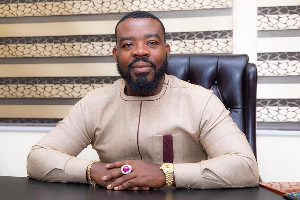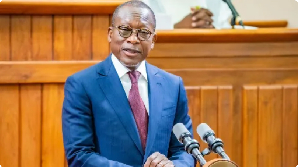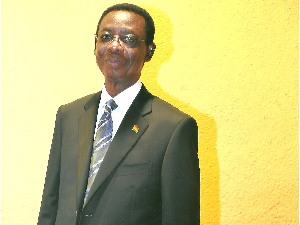Opinions of Wednesday, 12 March 2008
Columnist: Thompson, Nii-Moi
Thirsty @ 51
“The water shortage in Accra only highlights the urgent need for improving water supplies throughout the country, particularly in the rural areas”
If you thought the above statement was made by a politician sometime in 2008 as we celebrate 51 years of independence in the midst of a national water crisis, you may be forgiven for that.
The perfidious coup of 1966 put an end to this ambitious stride for national greatness and thereafter Ghana’s infrastructure development, including the adequate provision of water, began a steady decline over decades into the crisis we face now. Indeed, our water systems have hardly been expanded to keep pace with the explosion in population from 7 million in 1962 to an estimated 24 million in 2008.
In a way, the current water crisis poses a paradox of higher tariffs and declining service quality. In May 2001, Ghana Water Company (GWC) raised water tariffs by as much as 95.0%, the first in a series of hikes that were supposed to restore the financial health of the company and ensure that we continued to have at least the same amounts of water as before.
In a memorandum to the IMF in 2003, the government assured the Fund that with a “second round of price increases (12.0%) … Ghana Water Company Limited should be able to cover their costs”, adding that “the rates of cost recovery will be maintained through the implementation of the established automatic adjustment formulas.”
In 2004, the government again told the IMF: “Water tariffs were raised by 15 percent to full cost recovery levels, in line with the formula, and the Ghana Water Company Limited has confirmed that the new tariffs are being charged to customers with effect from April 1, 2004.”
Amidst much controversy, the government later handed over GWC to Aqua-Vitens Rand Ltd. (AVRL), a Dutch-South African company. Though AVRL was only supposed to “manage” GWC, it has since replaced GWC with its own name at GWC facilities throughout the country, fuelling fears that its “management” contract was really a prelude to selling off another national asset to foreigners on the shameful assumption that Ghanaians are incapable of managing their own affairs.
But AVRL has proven remarkably inept at fixing our water problems, blaming the latest crisis on the dry season! Surely, we need solutions, not excuses.
And so it is that on our 51st independence anniversary, we find ourselves thirsting not only for water but for knowledge, knowledge that will empower us to confront our own problems and thus validate Nkrumah’s declaration that “the Black man is capable of managing his own affairs”.
The author is chairman of the CPP’s Research and Manifesto Committee and the Party’s spokesperson on economic affairs.
Entertainment














